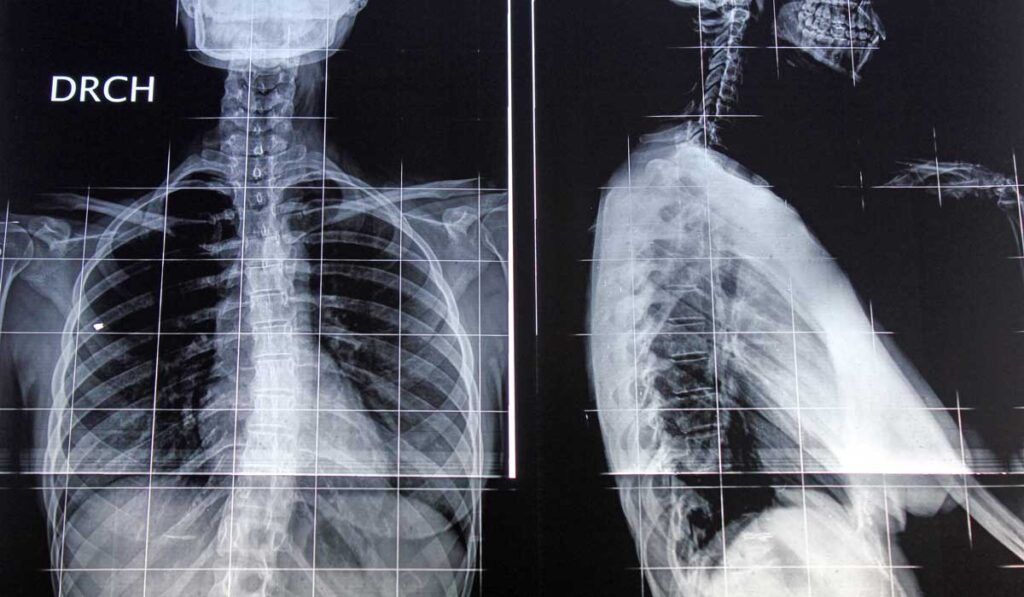A decades-old approach to addressing spinal pain is making a resurgence among leading orthopedic surgeons due to enhanced operating techniques and increased emphasis on spinal alignment for post-operative patients.
While most surgeons for the past few decades have employed the posterior, or back-entry, approach to spinal surgery, Amir M. Abtahi, M.D., assistant professor and co-director of Vanderbilt University Medical Center’s Orthopaedic Spine Surgery Fellowship, finds advantages in the anterior approach for some patients.
“Traditionally, the anterior approach has been viewed as a more serious surgery, but based on current techniques that is a bit of a misconception,” said Abtahi, who is winding up a study that is expected to be published later this year.
Evolution of a Procedure
When first emerging as a commonly available solution to spinal pain in the 1950s, spine surgery typically involved a large stomach incision, cuts to several abdominal muscles and interference with the intestines, increasing the risk of infection, Abtahi said. Post-surgery, these patients faced weeks, if not months, of recuperation.
Later, the less-invasive posterior approach became more popular, lacking the need to disturb the digestive tract and damage muscles. However, posterior surgery may pose a higher risk of complications for some patients undergoing certain procedures, such as spinal fusion.
“A distinct advantage is that it is easier to correct a patient’s alignment using the anterior approach.”
New surgical techniques make the anterior procedure a viable option today, requiring a much smaller opening incision, ability to bypass the intestines and only minimally impact muscles.
This scenario offers some advantages the posterior approach does not, including more room for a surgeon to operate, Abhati said.
“There are a couple of distinct advantages, including how the approach allows us to insert a larger cage between vertebra, which decreases subsidence and increases fusion rates.”
Experts Collaborate
Once considered a highly vulnerable region due to the abdomen’s complex vascular network, risks of the anterior approach to spinal surgery have been reduced with the involvement of vascular surgeons, who often work alongside orthopaedic surgeons to ensure that blood vessels in the abdomen remain intact as they are being moved aside to provide spinal access.
“It’s a great collaboration between the vascular surgeons and ourselves,” Abtahi said.
Recent studies have shown that patients undergoing the updated technique experience less incision-related pain and a shorter rehabilitation period than patients undergoing anterior surgery in earlier decades.
An Alignment Advantage
The anterior approach also gives surgeons more options for correcting spinal stenosis and other alignment problems, Abtahi said.
“A distinct advantage is that it is easier to correct a patient’s alignment using the anterior approach.” This point reflects a growing number of patients seeking additional medical and surgical treatments due to bone degeneration and subsidence in the years following an initial spinal surgery.
“After spinal segments are fused, disks may further degenerate and some of the intended alignment is lost,” Abtahi said. “Traditionally, no one paid much attention to alignment following surgery, but if you don’t restore anatomical alignment, it sets up patients for problems down the road.”
The additional space provided by the anterior approach gives surgeons more options for addressing problems with the spine. “We can remove everything that is pushing on nerves directly, and also indirectly,” Abtahi said. “Sometimes, when it is appropriate, we can go in from the front and insert a spacer that works like a car jack, relieving the pressure.”
To determine which patients may benefit from the anterior surgery, doctors study medical images carefully, Abtahi said. “We consider the pathology and the patient,” he said, adding that multiple previous abdominal surgeries or blood vessel calcification may contraindicate the front-entry approach.
But the trend is clear. More surgeons and more patients are discovering the benefits of this updated approach to the procedure.
“It is becoming more popular around the country and around the world,” Abtahi said.




